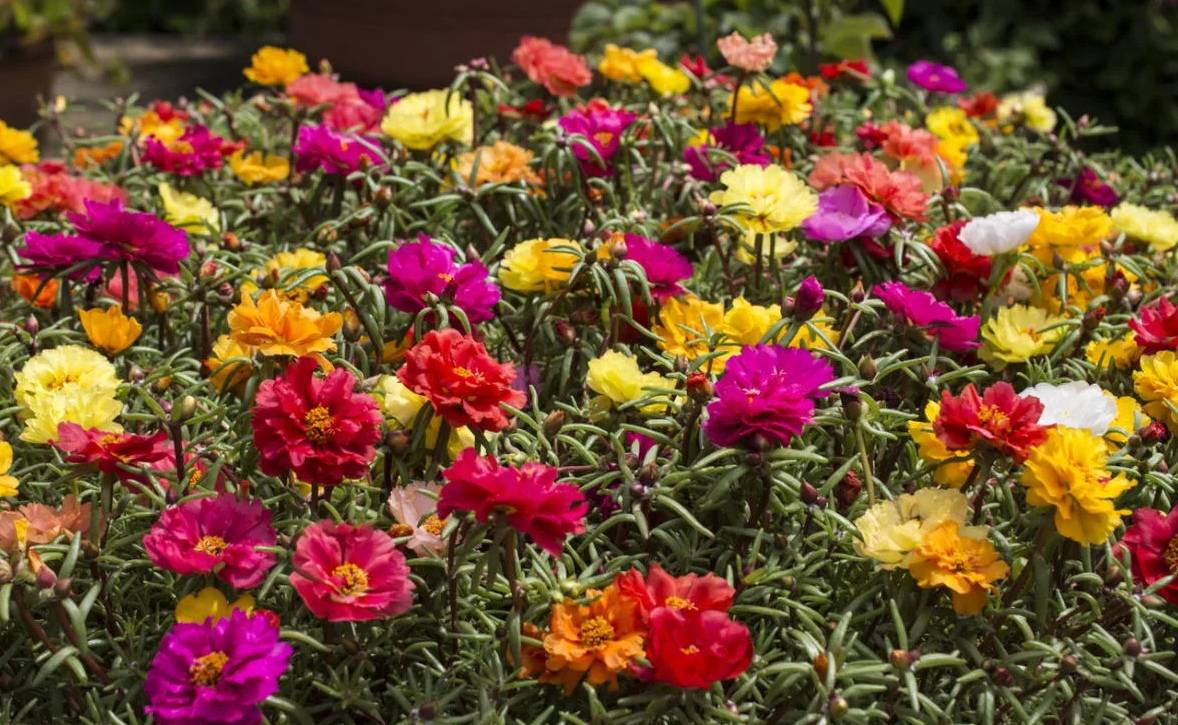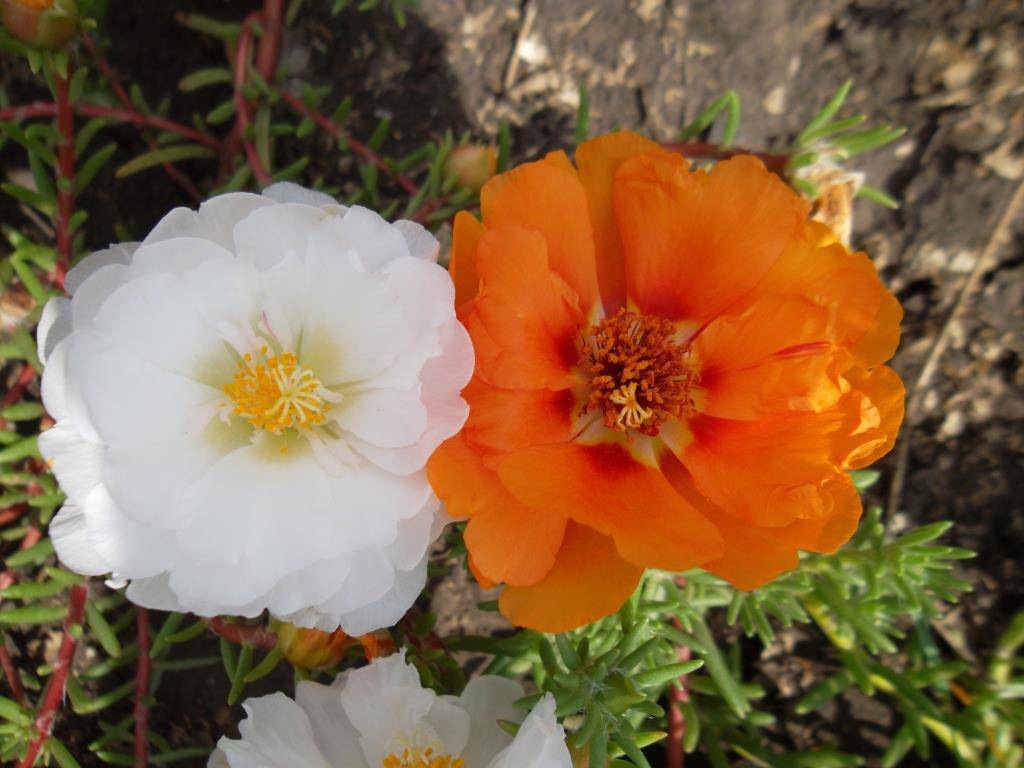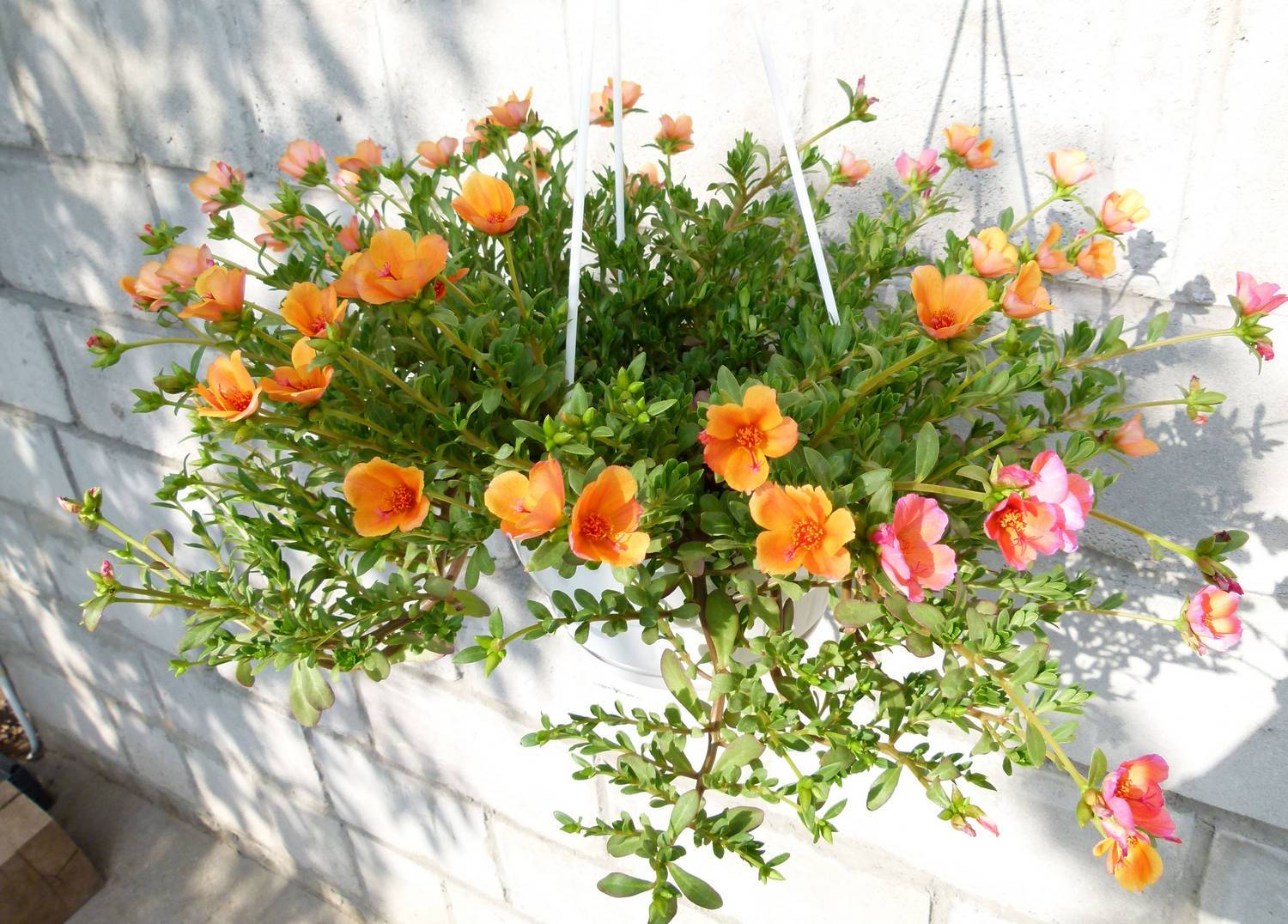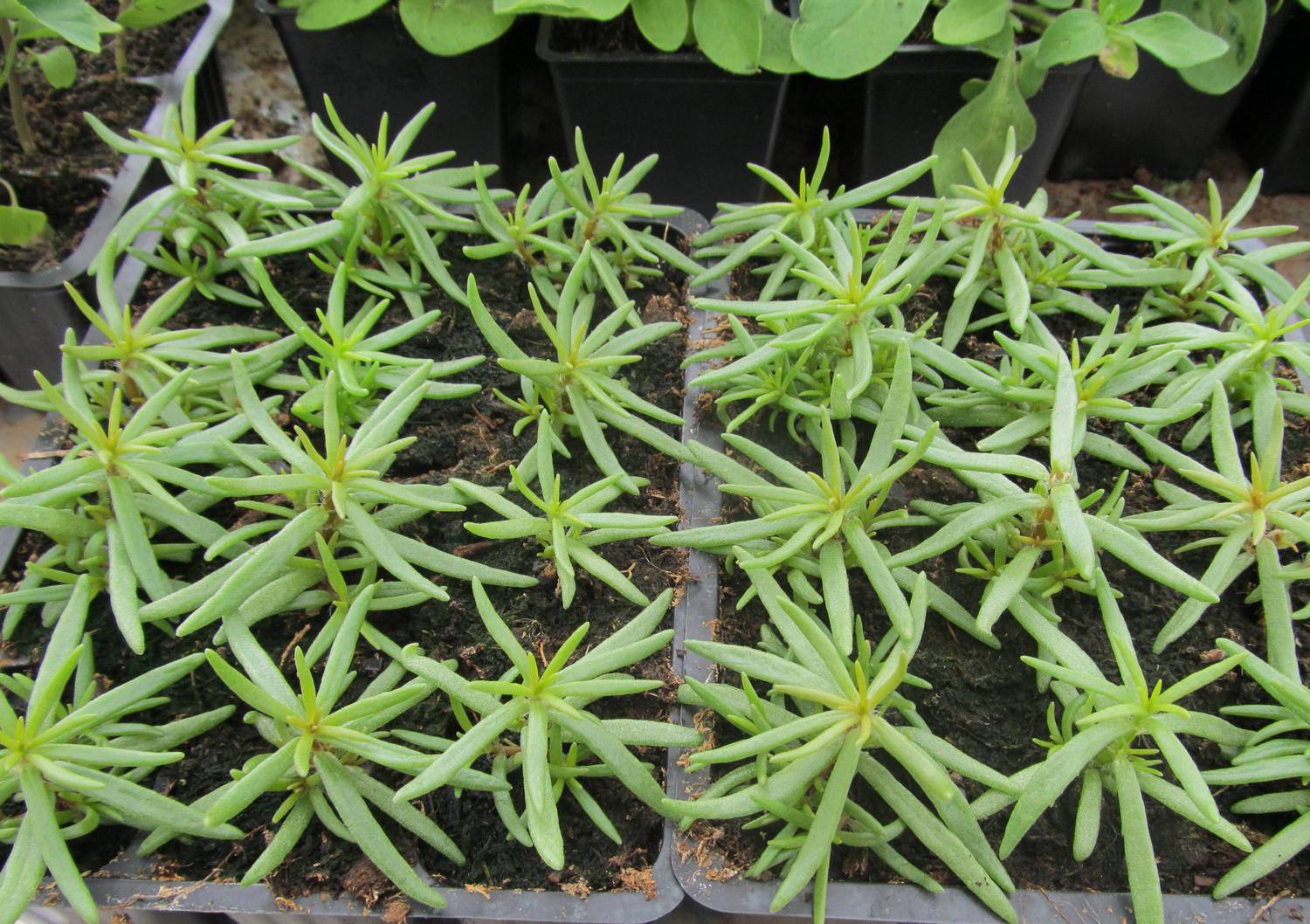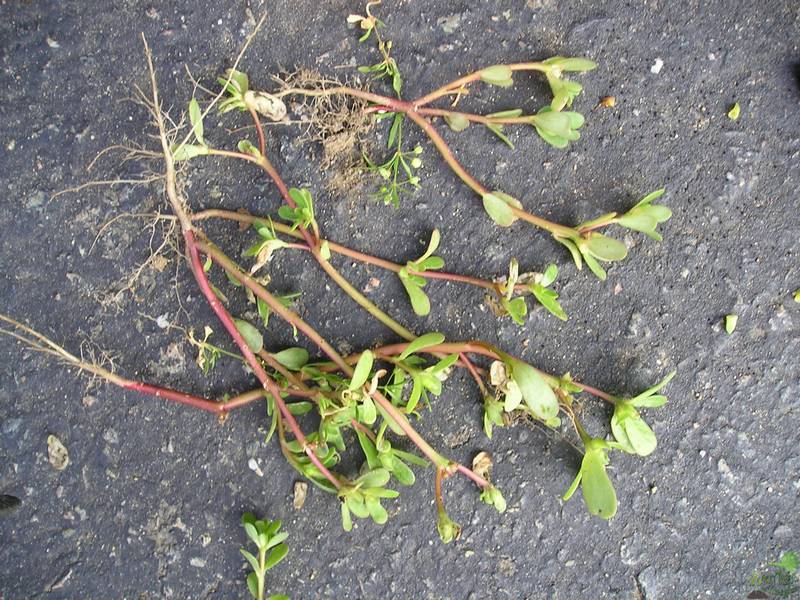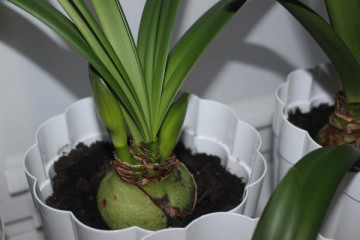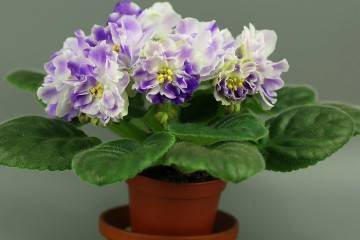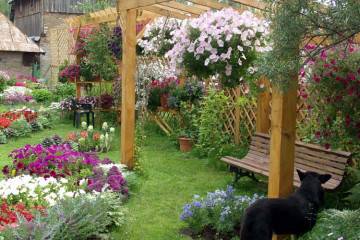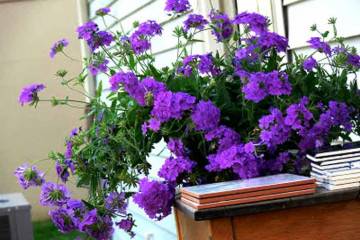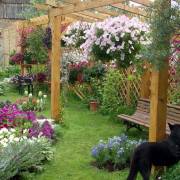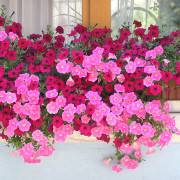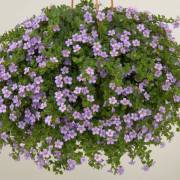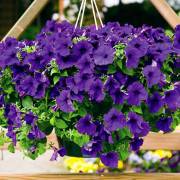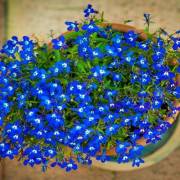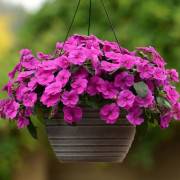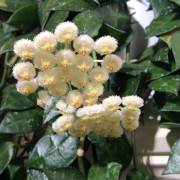Purslane - garden flowers, how they bloom and how they grow
Content:
"Flower rug" is a popular name that has stuck to the purslane due to the density of greenery and many bright flowers. Ampel flowers have taken root on balconies and terraces, terry varieties have become a bright decoration for parks, city flower beds and garden plots.
Characteristics and varieties of purslane
The plant belongs to the Purslane family. His homeland is North and South America, from where he came to Europe, and then to Russia. The flower has spread in the Caucasus, the Far East and Central Asia.
Appearance and main features
The flower grows up to 30 cm (garden variety - up to 60 cm), has brown or reddish fleshy stems, hollow inside. Small ovate leaves are colored green.
In the process of planting and caring for a purslane in the open field, much effort is not required. The flower has the ability to quickly build up greenery and is resistant to trampling.
How purslane blooms
The species are distinguished by a wide range of colors: they can be milky, yellowish, burgundy, red, etc. The purslane plant flowers appear in early June and persist until the end of September (in some, until the end of October). Blooming petals last for 24 hours. Due to the constant appearance of new ones, the fall remains imperceptible.
Which purslane to grow: annual or perennial
A thermophilic plant in Russia in the open field is grown as an annual. This applies both to the decorative type, decorating flower beds and park areas, and to the garden culture, eaten as a side dish for meat and fish.
The flower can withstand temperatures not lower than 10 ° C heat, therefore, as a perennial in the open field, it is found in European countries with warm winters, where it reproduces on its own.
In Russia, perennial purslane is preferable to grow at home. You can plant an ampelous variety in a pots on the street and bring it into the house for the winter. Perennial varieties can be a worthy decoration for loggias.
Popular decorative varieties
As a decorative purslane grown in the garden and at home, the large-flowered species is popular in Russia. A creeping flower with thick cylindrical leaves grows up to 30 cm. One bud is formed on each stem. In a purslane plant, the flower reaches about 7 cm in diameter; inflorescences can be monochromatic (red, yellow, etc.) and combine several shades.
Decorative double purslane is used as an ampelous flower, as well as when creating carpet areas in parks, borders, arrays on lawns. Looks good in the alpine slides.
Description of common varieties of decorative purslane:
- Sunny - grows up to 10 cm and has 4 cm flowers. Prefers southern rocky slopes
- Sunglo - has large flowers that do not close in cloudy weather.
- Scheherazadny - large-flowered purslane has 4 cm flowers that appear in July. Growing in pots is possible.
- Sonya - reaches 15 cm in height and is distinguished by satin petals. The color range is different.
The most popular variety is terry purslane, named for the uneven edges of the petals. Common terry varieties include:
- multicolored Flamenco, Air marshmallows, Baroque, Pun;
- decorative purslane Pink Haze;
- Slendens, Double Mix, etc.
Most plants grow up to 15 cm and have 4-5 cm brightly colored flowers.
Purslane: growing on a plot from seeds
Purslane (garden and indoor) can be grown in two ways: from seeds and from seedlings.
For planting seeds, you should choose areas remote from the accumulation of groundwater, preferably on a small hill.
For the abundant flowering of the purslane plant, growing in a sunny place is of paramount importance. In the absence of the sun, almost all varieties close and fade flowers.
The flower is not picky about the soil, because in nature, it lives on rocky and marginal land. A favorable condition for decorative purslane is the absence of black soil, since the abundance of nutrients provokes excessive growth of greenery and a decrease in flowers.
For a purslane plant, planting and care in the south and in central Russia cost a minimum of effort. In cold regions, in order to grow flowers in the garden, you will have to take care of seedlings in advance: sowing seeds in open ground in the north is impossible.
How to grow decorative purslane from seedlings
Growing from seedlings includes:
- planting seeds;
- hardening of seedlings;
- planting in open ground.
Planting seeds
Preparation begins in the fall with the harvesting of land (turf or soil from under deciduous trees). The soil should be free of peat, which negatively affects seed germination. The earth is kept in a refrigerator. Before use, it is calcined in the oven for 1 hour and river calcined sand is added.
In late winter - early spring, seeds are placed in a container with prepared soil and a 2 cm drainage layer (fine gravel). The planting depth is 0.5 cm, the distance between the seeds is 1 cm. The container is covered with a cap and placed on the southern windowsill.
In order for the seed of a purslane (annual or perennial) to germinate, a temperature of at least 20 ° C and regular spraying are provided. Ventilation is carried out when condensation appears on the hood.
The period from sowing to the first leaves of garden purslane begin to sprout is 7 days. At the stage of the appearance of two leaves, the plants dive: each flower requires a pot with a diameter of about 8 cm.
If the process of planting seeds for seedlings of decorative purslane seems to be long, you can purchase ready-made seedlings in the store.
Hardening of seedlings
To improve its adaptability, the purslane should be hardened before being planted in its permanent place. Two weeks before the intended planting in open ground, containers with seedlings are taken out into the street. Stay in the fresh air on the first day is 15 minutes; each subsequent increases by half an hour and is brought to 5 o'clock a day.
How to plant decorative purslane in open ground
Planting seedlings outside occurs in late April - early May in the south, in early June - in the middle lane. In the Urals and Siberia, the decorative purslane is planted on June 10-15.
Planting is carried out after the last frost. The air temperature should not fall below +10 ° C, otherwise the plants will die. In the north of the country, it is recommended to grow the flower in containers to ensure that it can be removed indoors when the temperature drops.
Caring for flowers in the garden
The plant does not need careful maintenance, including abundant watering. However, in order for the purslane to be able to show its flowers in all their glory, it needs a sunny color and timely feeding.
Watering mode
Frequent watering leads to root rot. It should be watered with warm, settled water as the top layer of the earth dries up (about once a week). In hot periods, watering becomes more frequent up to 1 time in 4-5 days.
Top dressing for lush flowering
The first time the plant is fed a week after planting, then twice a month. For fertilization of garden purslane, both a mineral mixture and an organic one are used. At the beginning of the season, nitrogen supplements are preferred.
From what is at hand use ash solution, egg water, mullein infusion. A good flowering stimulant is succinic acid. Among the mineral fertilizers, you can use Kemira, Agricola, Terasol.
Is it possible to save purslane in winter
To prevent the plant from dying in winter, it is dug up at the end of summer and placed in a lighted place with a temperature of 15-18 ° C. There is no need to take care of the garden purslane during wintering, just water it periodically.
If you plan to grow a flower as a home perennial purslane, the dug out bush is placed in a pot and placed on the southern windowsill, providing additional lighting in the winter. In winter and autumn, the flower is watered once a week, the rest of the time - once every 4-5 days.
Reproduction
You can propagate annual and perennial purslane by cuttings and seeds. Hybrid varieties propagate only by cuttings, since the seeds do not transmit the maternal genes.
By cuttings
Cutting looks like this:
- A 10-15 cm twig is cut off from the plant.
- Leaves are removed 2-3 cm from the cut.
- A stalk of decorative purslane is placed in the raw sand or water.
- Placed in a bright place, in the heat - sprayed.
After the roots appear, the plants are planted in pots or in an open space.
Seeds
If you plan to multiply by seeds, you should collect them in advance and store them until spring. The petals are removed from the pollinated flower. After 2 weeks. after pollination, the seed box should turn brown and open, and the seeds should spill out. They should be collected and allowed to lie down for at least 3 months. before sowing.
Growing problems
Difficulties that may arise when growing purslane and caring for it are associated with the loss of decorativeness (problems with greenery) and the presence of diseases and parasites. As for creating conditions for growth, purslane is unpretentious.
Why do the leaves of decorative purslane begin to turn yellow
Yellowing can be caused by:
- excessive watering - you need to loosen the ground and change the moisture regime;
- lack of nutrients - feed;
- lush bush - perhaps the large-flowered purslane has become overgrown and should be thinned out.
How to get rid of pests
The plant has good immunity, but sometimes it can be attacked by a fungus that causes the appearance of black spots on the leaves. To get rid of it, it is necessary to remove the affected parts and spray with copper sulfate (or other copper-containing preparations).
With excessive moisture, rot may appear, which can be eliminated by spraying with fungicides. Before the procedure, it is necessary to loosen the ground. The fight against aphids is carried out with the help of Aktelik, Aktara, Fitoverma, etc.
Dozens of varieties of purslane can transform gardens, parks, city beds and even balconies. The assortment is so great that it will satisfy the tastes of even the most "spoiled" grower.
